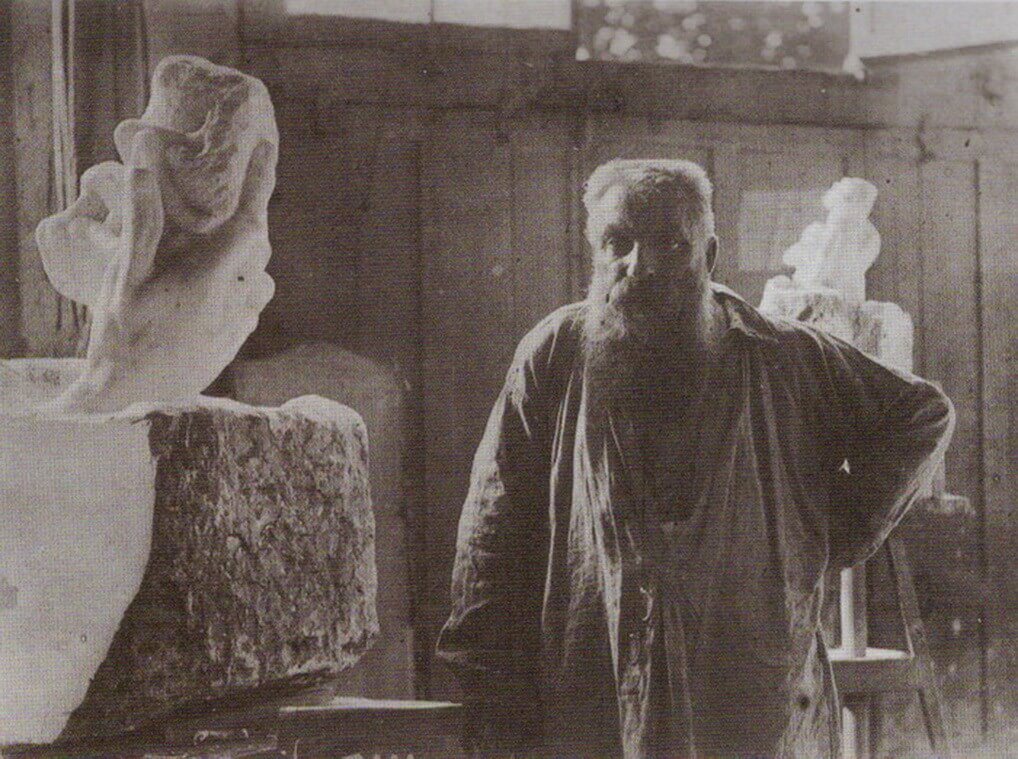
Rodin and the “Hand of God” marble sculpture
In view of the Christmas season and the arrival of the new year, I chose to tell who Rodin was and talk about his work “Hand of God”. The inspiration came to me last Sunday visiting the exhibition“Encounter and embrace in 20th century Sculpture from Rodin to Mitoraj”in Padua.

Hand of God (1896-1902) marble
“Hand of God” sculpture – Auguste Rodin
“Hand of God” is a marble sculpture, about 80 cm high, created by Auguste Rodin between 1896 and 1902. It is exhibited in Paris in the Musée Rodin.
For his Christian formation, Rodin was inspired by the biblical representation of the Creation of Adam and Eve, for Rodin the shaping hand is even the instrument of creation par excellence, he reproduced in marble the mould of his own hand. His personal sculptural“gesture”represents the“”gesture” with which God creates.
From a rough-hewed marble block emerges a hand that represents that of the Creator who moulds and supports the bodies of Adam and Eve gathered in an enveloping embrace.
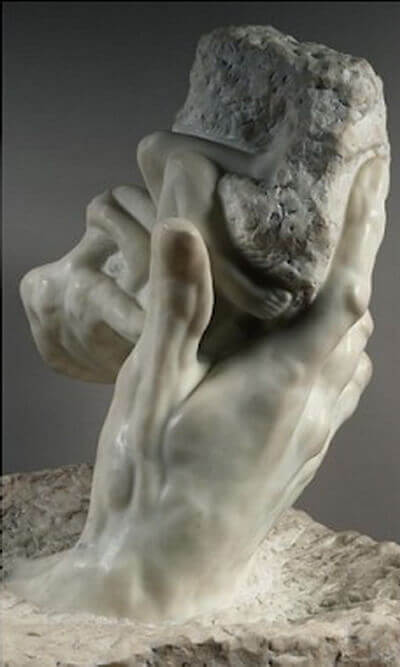
Hand of God (1896-1902), marble
The bodies seem to come to life and separate off from material before our eyes. The two small bodies represent the corporeity, the uniqueness, the distinction and the consequent complementarity. Being gathered in the great hand of God symbolizes how human beings are directly bound to God’s will. On certain points the marble has the sign of the tools: in the base Rodin has left the holes created by the chisel and on the head and back of Adam you can see the traces of the work tools. This was his signature, leaving a part of the work unfinished and raw.
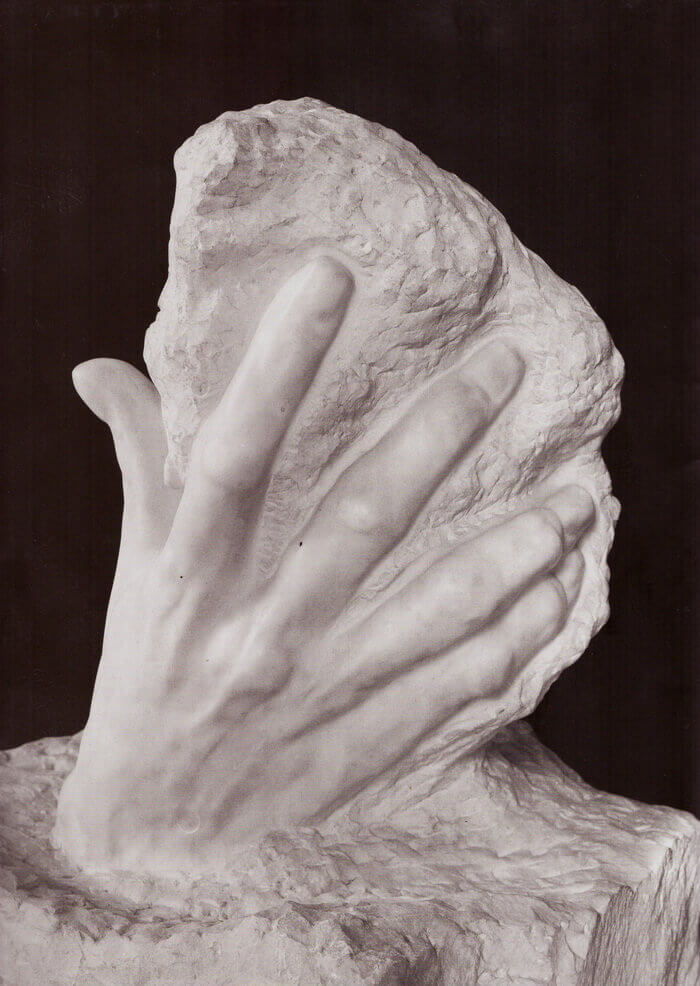
Hand of God (1896-1902), marble
Who is Auguste Rodin?
François-Auguste-René Rodin was a French sculptor and painter; born in Paris on 12 November 1840 and died in Meudon on 17 November 1917. With his innovative style he changed the world of modern sculpture.
He did traditional studies and had a modest approach to his work, similar to that of a craftsman. He has long desired recognition from the academic world, even though he has never been accepted in the most important schools of Parisian art; he has been rejected three times by the High School of Fine Arts in Paris.
Only when he was 40 years old, he met the favour of both the government and the artistic community; he began to spend time with many high-profile artists and intellectuals. He began to be an appreciated artist all over the world.
In more than fifty years of career he has created thousands of busts, whole figures and sketches. He left his study and fusion rights to the French state which adopted a number of laws to limit the reproduction of bronze copies and the spread of fakes. After his death, his sculptures suffered a short decline in popularity but in a short time his reputation and his artistic heritage were consolidated again.
He is considered the greatest sculptor of his time, the “Michelangelo” of contemporary sculpture.
Rodin artistic technique and sculptural style
His great originality consisted in modeling human figures exalting the emotions by expressive force, physicality and materiality of the individual.
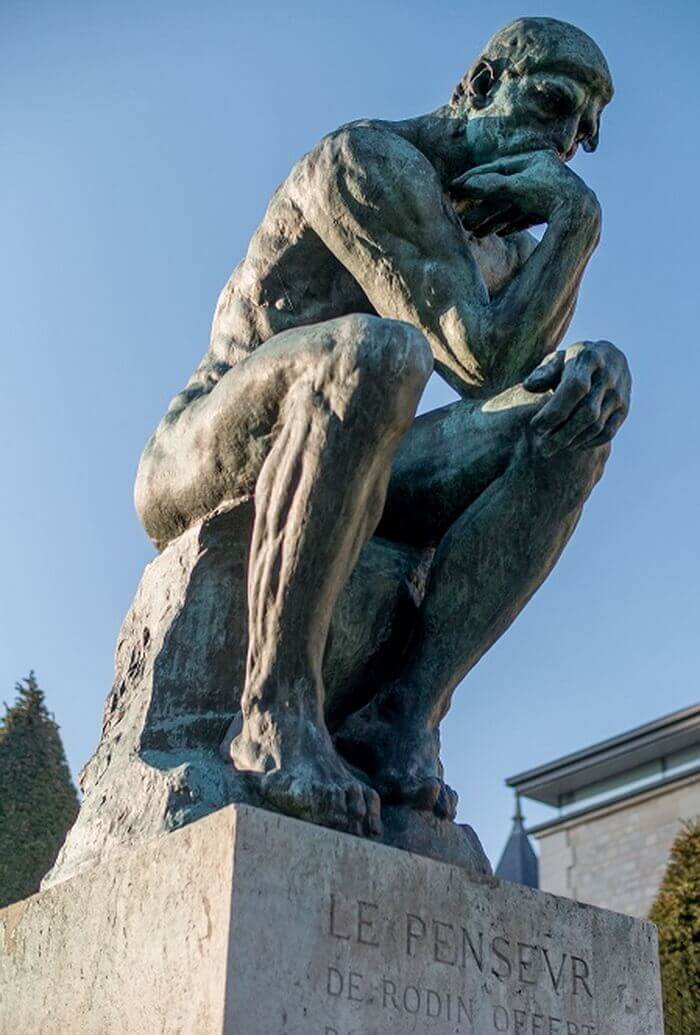
The thinker, 1880 – bronze
He was above all a great draftsman; he drew always and everywhere. Many of his most famous works were widely criticized because they clashed with the prevailing figurative sculptural tradition in which the works were decorative and stereotyped. He did not want to rebel against the previous style but tried to free the sculpture from the repetition of established canons, laying the bases for new experimentations. He was aware of the controversies that his works aroused but refused to change style.
He was mainly expressed by shaping clay with the thumb. He created quick sketches with complex, vigorous and deep surfaces that were subsequently finished, printed in plaster and finally cast in bronze or carved in marble. In many works, he combined well-defined parts with rough parts intentionally unfinished. He interpreted the emotions of the subject through details, surfaces and shadows.
His popularity is represented by works that express the emotion of ordinary men and women. His most famous works, “The Kiss” and “The Thinker”, are widely used as symbols of human emotion and personality.
Rodin wanted to bring what’s raw to be beautiful and elegant.
To those who asked him how he was able to create his statues, he replied:
«I choose a block of marble and remove everything I do not need!»
The exhibition “Encounter and embrace in 20th century Sculpture from Rodin to Mitoraj”
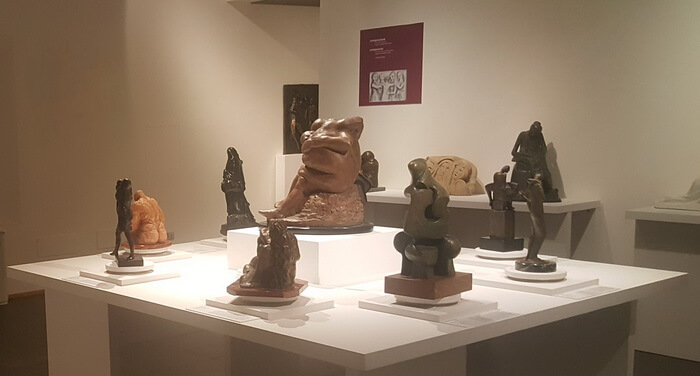
Exhibition “Encounter and embrace”, Padua – Italy
I recommend the visit of this very interesting exhibition, open from 16 November 2019 to 9 February 2020, at Palazzo del Monte di Pietà in Padua – Italy.
It is an exhibition curated by Alfonso Pluchinotta, physician and historian of medicine, with a special attention to the body as a language and to the hand as a creative tool.
The works are exhibited along a thematic path from Rodin to the Mitoraj Polish sculptor and also trace the development in the twentieth century of the different techniques in the sculptural art of different materials such as: marble, sandstone, bronze, iron, wood, terracotta, ceramic, glass and plaster.
The works invite deep reflections on the feelings of the man, values, potentialities, fragility, resilience and helpfulness. It tells about the physical and emotional suffering, the sense of belonging, fear, abandonment and affection.
At the exhibition you will also find a beautiful book on the representation of the feelings of the man in the sculpture with the description of all the exposed works.
I recommend to purchase the book for a special gift!
As Amy Károlyi the Hungarian poet said
«Who left me this sensitive bridge which leads me from loneliness to you? One of its pillars is my palm, the other is your hand.»
I wish to you many meetings, hugs and bridges to unite!
This article contains general information. For questions and curiosities leave a comment below. If you wish to be contacted, please fill out the form.




IT Telkom
10 April 2025 at 14:27How does Rodin’s “Hand of God” sculpture symbolize the connection between human beings and divine creation? Universitas Telkom
Arte 2000 - Paola
17 April 2025 at 15:04I thank you for your attention to our blog. This is an article with general information. To know more I suggest you to read some thematic books. Paola